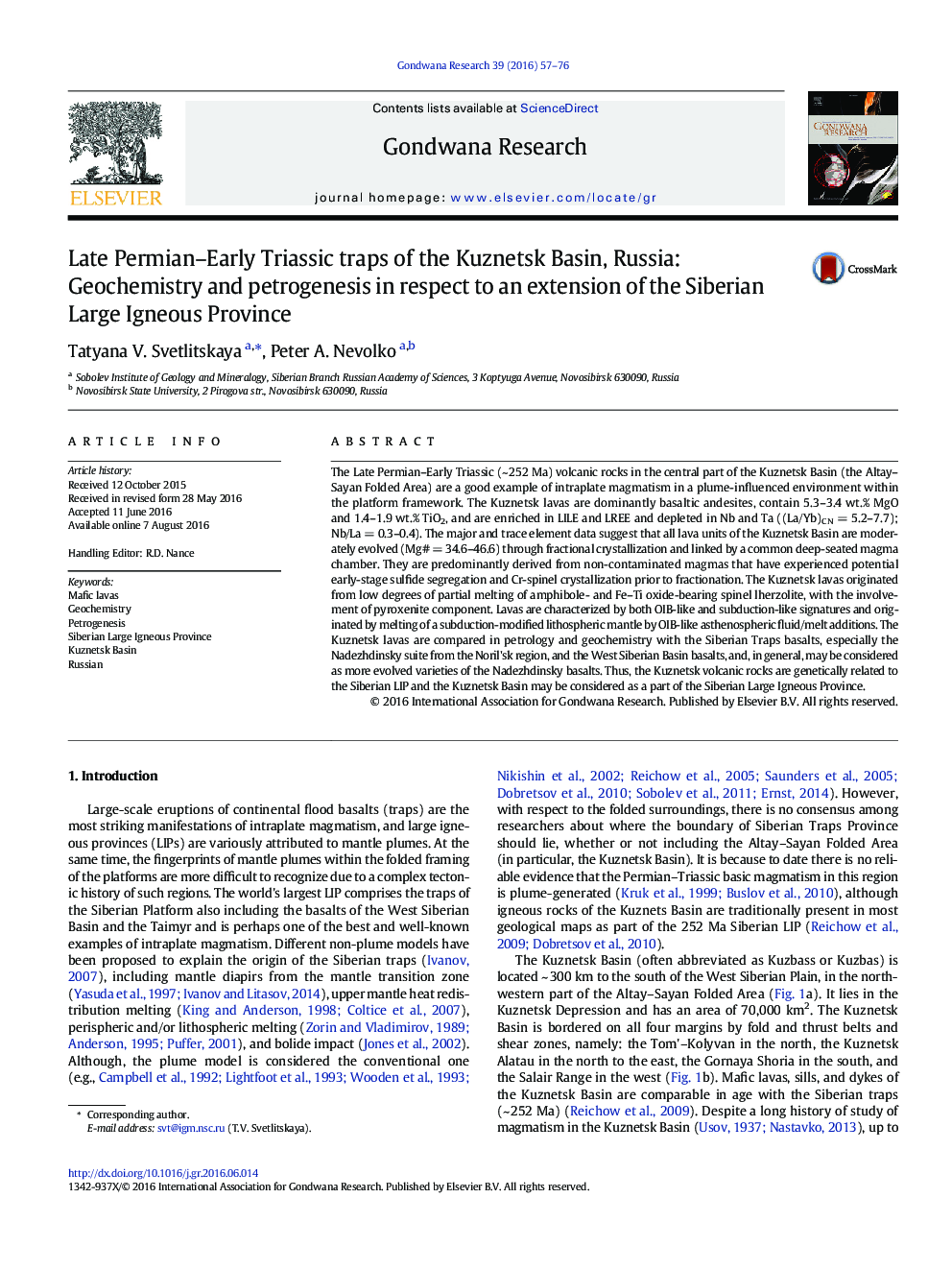| Article ID | Journal | Published Year | Pages | File Type |
|---|---|---|---|---|
| 4726562 | Gondwana Research | 2016 | 20 Pages |
•The Kuznetsk lavas originated from low-degree partial melting of spinel lherzolite.•The Kuznetsk lavas are characterized by both OIB-like and subduction-like signatures.•The Kuznetsk Basin is a part of the Siberian Large Igneous Province.
The Late Permian–Early Triassic (~ 252 Ma) volcanic rocks in the central part of the Kuznetsk Basin (the Altay–Sayan Folded Area) are a good example of intraplate magmatism in a plume-influenced environment within the platform framework. The Kuznetsk lavas are dominantly basaltic andesites, contain 5.3–3.4 wt.% MgO and 1.4–1.9 wt.% TiO2, and are enriched in LILE and LREE and depleted in Nb and Ta ((La/Yb)CN = 5.2–7.7); Nb/La = 0.3–0.4). The major and trace element data suggest that all lava units of the Kuznetsk Basin are moderately evolved (Mg# = 34.6–46.6) through fractional crystallization and linked by a common deep-seated magma chamber. They are predominantly derived from non-contaminated magmas that have experienced potential early-stage sulfide segregation and Cr-spinel crystallization prior to fractionation. The Kuznetsk lavas originated from low degrees of partial melting of amphibole- and Fe–Ti oxide-bearing spinel lherzolite, with the involvement of pyroxenite component. Lavas are characterized by both OIB-like and subduction-like signatures and originated by melting of a subduction-modified lithospheric mantle by OIB-like asthenospheric fluid/melt additions. The Kuznetsk lavas are compared in petrology and geochemistry with the Siberian Traps basalts, especially the Nadezhdinsky suite from the Noril'sk region, and the West Siberian Basin basalts, and, in general, may be considered as more evolved varieties of the Nadezhdinsky basalts. Thus, the Kuznetsk volcanic rocks are genetically related to the Siberian LIP and the Kuznetsk Basin may be considered as a part of the Siberian Large Igneous Province.
Graphical abstractFigure optionsDownload full-size imageDownload as PowerPoint slide
